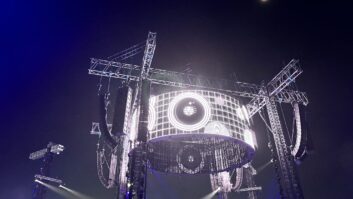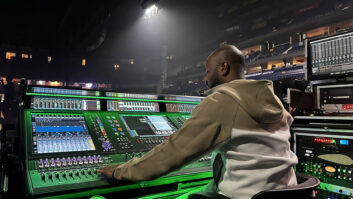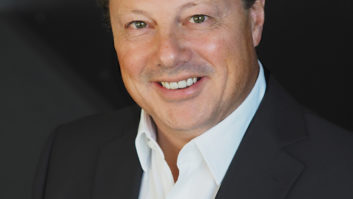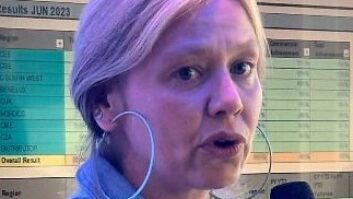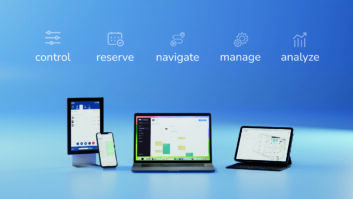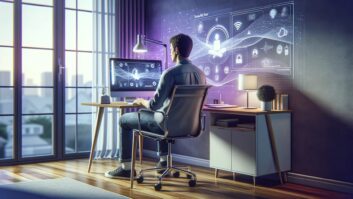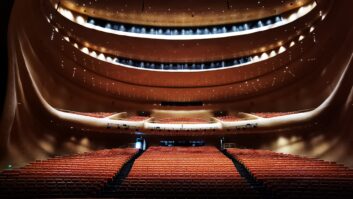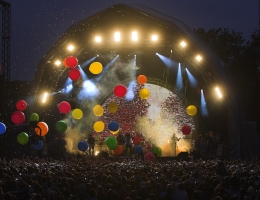
Jodrell Bank Observatory is the site of the UK’s iconic Lovell radio telescope, the third largest steerable radio telescope in the world – and has just been host to what could be the first of a potential new series of live concerts.
Manchester-based dbn was asked to provide lighting by co-promoters Ear To the Ground, who were collaborating with Kendall Calling and The Warehouse Project to stage the event in this unique setting, headlined by The Flaming Lips. Also on the bill was British Sea Power, OK GO and two other bands.
“It was a fantastic opportunity to work in a very special place overlooked by one of the most amazing scientific instruments in the world,” said dbn’s project manager Nick Walton. “Everything went smoothly and it was a massive success all round. We hope this will be the first of more events here.”
The 12 metre orbit stage was situated just to the right of the 76 metre wide revolving telescope dish, which despite its colossal proportions, created a very harmonious perspective when moved into position for the show so the face of the dish pointed towards the audience. Projections were beamed on to it during the Flaming Lips’ set, and a custom three minute video work was screened on the dish before the band’s encore.
dbn’s brief was to provide stage lighting for all the bands – accommodating the Flaming Lips spec from LD Ian Turner, who is also the LD for British Sea Power. Although not actually stipulated, Walton and dbn made the decision to also light the framework, legs and pivotal elements of the dish – a mass of criss-crossing white-painted steelwork, which is perfect for illumination. “It was an opportunity not to be missed that took the concept of truss toning into another spatial dimension,” enthused Walton, “As well as being a functional working tool, it is a stunning piece of architecture, and I really loved doing it.”
Around the perimeter of the dish he positioned a selection of Studio Due City colour wash lights – a mix of 1.8 and 2.5Ks, plus a quantity of i-Pix BB4 and BB7 LED wash fixtures. Walton was keen to get the richness and deep quality of light from the LED fixtures and combine it with the arc lights.
Two high powered flower effects were located on the other side of the dish and blasted through the framework towards the crowds for the finale.
The stage lighting was more conventional. dbn sub-hung two main trusses, which were jointed using custom hinges that angle the metalwork very efficiently around the orbit’s roof space, maximising the eight metres trim height. They also flew a one metre truss piece for the Flaming Lips’ mirror ball.
Rigged onto the two main trusses were ten Clay Paky Alpha Spot 1200 HPEs, eight Alpha Spot 700 HPEs and 16 Alpha Wash 700s. On the deck were four Robe ROBIN 600 LEDWashes for low level coverage and two i-Pix BB16s for powerful cross stage washes.
dbn supplied ten Martin Professional Atomic strobes for the ‘production’ lighting rig, and for audience illumination, a collection of 2- and 4-lites hung on the front side of the first truss, supplemented with additionals from the Flaming Lips’ floor package. This also included a 6.5 metre high arch of Stealth LED screen, framed with Sunstrips, which had to be moved on- and offstage, extra strobes, Chroma-Q DB4s, and four smoke machines – which worked together with four from dbn – and a multi-coloured laser.
Ian Turner also brought in his own Chamsys MagicQ console to run the Flaming Lips show, while dbn’s Avolites Pearl Expert was used to run all the other bands’ lighting and the dish lights.
Set up was on the Friday morning ready for a Saturday show, leaving a night free for programming. The operation encountered a few challenges, the main one being the fact that it was a cell phone free environment whilst the dish was in operation during the build.
Sound was supplied by another local company, Audile, and projection was co-ordinated by Pod Bluman of Bluman Associates, who used sixChristie 20K machines overlaid to create one super-bright picture on the dish.
